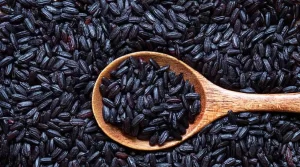Different types of millets and their uses
Millets are a group of small-seeded grasses that have been cultivated for thousands of years and are gaining popularity for their nutritional benefits. Here’s a brief overview of different millets and their uses:
Pearl Millet (Bajra):
Nutritional Profile: High in protein, fiber, and essential minerals.
Uses: Bajra is commonly used to make unleavened flatbreads in Indian cuisine.
It is also used in porridge and as a base for various dishes.
Nutritional Profile: Rich in protein, dietary fiber, and low in glycemic index.
Uses: Used in traditional South Indian dishes like dosas, idlis, and upma.
Can be prepared as a rice substitute or added to salads and soups.
Nutritional Profile: High in calcium, iron, and amino acids.
Uses: Commonly used in South Indian cuisine to make dosas, idlis, and porridge.
Ragi flour is used in baking and can be added to smoothies for a nutritional boost.
Proso Millet (Panicum miliaceum):
Nutritional Profile: Rich in protein, dietary fiber, and antioxidants.
Uses:
Cooked as a rice substitute, in porridge, or added to soups and stews.
Suitable for both sweet and savory dishes.
Little Millet (Samai):
Nutritional Profile: High in fiber, iron, and essential minerals.
Uses: Cooked as a rice substitute or in combination with other millets.
Ideal for making upma, kheer, or pulao.
Kodo Millet (Varagu):
Nutritional Profile: Rich in fiber, protein, and antioxidants.
Uses: Can be used to prepare various dishes, including idlis, dosas, and upma.
Suitable for both sweet and savory applications.
Barnyard Millet (Sanwa):
Nutritional Profile: High in fiber, protein, and essential nutrients.
Uses: Commonly used in fasting foods and as a rice substitute.
Suitable for making khichdi, pulao, and porridge.
Nutritional Profile: Rich in fiber, protein, and antioxidants.
Uses: Used to make flatbreads, rotis, and porridge.
Flour can be used in baking and as a gluten-free alternative.
Benefits of Millets:
Gluten-Free: Millets are naturally gluten-free, making them suitable for individuals with gluten intolerance.
Rich in Nutrients: Millets are a good source of protein, fiber, vitamins, and minerals.
Low Glycemic Index: Millets have a lower glycemic index compared to refined grains, making them suitable for managing blood sugar levels.1
Incorporating a variety of millets into your diet not only adds diversity to your meals but also provides a range of nutritional benefits. From traditional dishes to modern recipes, millets offer a versatile and nutritious addition to a balanced diet












